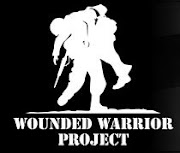
Brian Neuman
Because Brian enlisted in the service as a Ranger during his first stint with the Army, he did all of his ranger training at Fort Benning, Georgia. He was subsequently assigned to Hunter Army Airfield in Savannah, where he remained for four years. Only once did he come close to combat during that enlistment, when his unit was deployed off Haiti in 1994 in Operation Uphold Democracy to end an unlawful military takeover of that country from its democratically elected government. As the security situation on the ground worsened, diplomacy backed by the threat of military force won the day before combat was necessary to end a coup that had brought a new reign of terror upon the Haitian people. Honorably discharged from his first enlistment, Brian earned an associate degree from Bristol Community College in Massachusetts and worked in the construction industry for a few years. However, after the events of September 11, 2001, Brian felt a strong inner force of patriotism compelling him to return to the service of his country.
Some years had passed, and he was unable to get back into the Ranger program. He went into psychological operations, since that was a way to get attached to a Ranger battalion. After going through training all over again, as well as advanced infantry training in psychological operation, Brian studied the Arabic language for six months.
When he went to Afghanistan in November 2003, Brian got his wish. He was attached to his old outfit, the 1st Battalion, 75th Ranger Regiment, for the first three months of his seven-month tour and spent the remaining four months with another battalion from the same regiment. He saw plenty of combat while in Afghanistan, but no major fighting. As he described it, “We did a lot of missions but had just had little contacts with the enemy.” What Brian did emphasize was the severity of the climate in which the troops operated – the austere mountain landscape and extreme cold of winter.
Fort Bragg, North Carolina may be “The Home of the Rangers,” but garrison life didn’t appeal to Brian when he returned to the United States in May 2004. He managed to get deployed to Iraq in August 2004, just three months after returning from Afghanistan.
In Iraq, Brian was attached to the 1st Marines Division doing psychological operations in the dangerous area surrounding the Sunni city of Fallujah. At the time, instability was mounting inside the city; it would culminate in the Battle for Fallujah, launched November 7, 2004. Brian was heavily involved in the battle from the first day. He led a team into the city in a Bradley Fighting Vehicle on November 7, 8 and 9, but they came out at night when the city calmed down. On November 10, the city did not calm down, and they maintained their presence overnight.
The following day, November 11, Brian’s team, which included his interpreter and two soldiers, had been inside their Bradley for 36 hours. They had been hit by 10 to 15 rocket-propelled grenades (RPGs), but all of them bounced off without doing any harm to the troops and the interpreter inside. However, at noon, the Bradley was hit by an explosively formed projectile (EFP), which hit the vehicle about six inches from Brian’s arm and penetrated three inches of steel before entering the Bradley.The EFP took off Brian’s arm at the elbow and ripped across his chest, cutting his pistol and everything else he had on his chest in half. “Thank God for my body armor,” Brian said. “It saved my life.” The EFP passed through the body of Brian’s interpreter, killing him instantly. Then, it went up into the turret of the Bradley, cooking off many rounds of ammunition.
As the smoke in the vehicle cleared, Brian saw that his arm would never be reattached to his body; the destruction was too bad. Brian’s soldiers were unharmed and were looking at him as if he were a ghost. He got them out of their trance so they could apply pressure to his wound and stop the bleeding. They got out of the Bradley. Brian went first, running for a medic holding his arm. The two soldiers covered him as all three took small-arms fire from the enemy. Brian is proud of his soldiers. Due to their presence of mind, all three survived the Battle for Fallujah.
Recuperation: Brian had his first major surgery at a medical aid station in Iraq. From there he went to the military hospital at Balad Airbase in Iraq, and on to the Army’s Landstuhl Regional Army Medical Center in Germany. He arrived at Walter Reed Army Medical Center in Washington, D.C., within a week of his injury. He had five surgeries as a result of his wounds.
“You feel guilty at first because your friends are still in Iraq and you’re not with them,’ said Brian of the time after his arrival back in the United States, “but then you realize that you’re not going to be able to do what you’ve been doing any longer. There are a lot of things you can do to deal with that, and one thing I did was focus on the next big event outside the hospital.” Of course, “big events outside the hospital” are a major piece of the rehabilitative program offered by the Wounded Warrior Project.Involvement with WWP: The event that captured Brian’s attention was the Bataan Memorial Death March of 2004. This 26.2-mile trek is held annually in the brutal desert environment of New Mexico’s White Sands Missile Range to honor the World War II troops who suffered the horrors of the Bataan Death March. Many of the wounded soldiers who participate carry 35-pound packs as they drive their bodies through this grueling march. Brian has participated every year since his return from Iraq, and he loves the World War II veterans he meets as a result of this event.
Describing the value of events like this, Brian said, “It’s so important to have the recreational opportunities that these events provide, but it certainly doesn’t end there. These events get injured troops out of the hospital environment. They get the minds of the troops focused on something. It really helped me, and I see how much it helps others to get out and do it."
“Take a leg amputee learning to walk on ice. If that veteran goes on a ski trip with the Wounded Warrior Project, he or she will walk on ice for the first time while surrounded by therapists and prosthetics professionals. That’s a whole lot better than just walking out of your house the first time and doing it on your own.” Brian explains.
Brian was medically retired from the Army on September 28, 2005, and went to work for the Wounded Warrior Project the following day. He loves the WWP mission and talks about it in terms of the organization’s logo, which features a soldier carrying a wounded comrade off the field of battle. “When you wear a shirt or hat with the WWP logo on it, you’re not just another guy with one arm. You’re a wounded soldier. That’s important. It says something to the people you meet.”Speaking of his work with the Wounded Warrior Project, Brian says, “I want to use my injury in a positive way, and WWP is the only organization I’d want to do it with. It feels great to be of use to other people.
“I never felt I could make a difference in the life of another person, but now that happens all the time. To see another wounded soldier do something for the very first time and get really excited about it – now, that’s awesome!“I love giving people the tools to adjust to life after they’ve been injured – to transition to civilian life or to return to the military. That’s cool. And to help military families with the little things that can go wrong and the problems that can turn up – that’s really rewarding!”






No comments:
Post a Comment